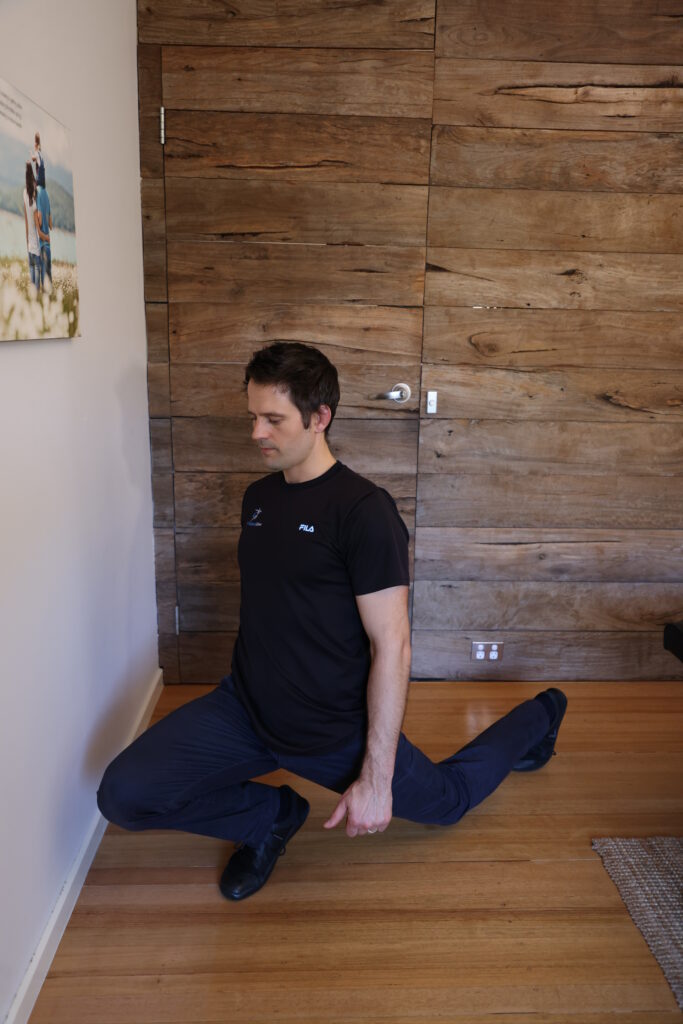The deep lunge exercise is a great way to improve your flexibility and strength in your lower body. By performing this exercise, you can increase flexibility in your hip flexors and knees, which can help to alleviate tightness and discomfort in these areas.
Additionally, the deep lunge exercise functionally loads the knee in a way that strengthen the connective tissues that help to stabilize the knee. This can be especially beneficial for individuals who are recovering from knee injuries or who experience knee pain or instability.
Incorporating the deep lunge exercise into your fitness routine can also help to improve your overall balance, stability, and lower body strength.
Overall, the deep lunge exercise is a highly effective way to improve your lower body function.
Here are the steps to perform the max depth lunge:
- Start by standing with your feet hip-width apart, with your toes pointing straight ahead. Then take a big step forward with one foot.
- Lower your body down towards the ground until your back knee is just above the ground and your front knee shoots forward in front of the toes so that the back of your thigh resting on top of the calf.
- Push through your front foot to rise back up to the starting position.
To make the max depth lunge easier, you can use an elevated surface, such as a step or a bench, to support your front foot. This will decrease the load and makes it easier to perform the exercise. You can also hold on to an object as a balance aid.
To make the max depth lunge harder, you can hold dumbbells in your hands, which will lead to a stronger hip flexor stretch at the bottom phase of the movement and ad resistance on the way up.
Remember to keep your core engaged, your chest up (to get max stretch through your hip flexors), and your shoulders relaxed throughout the exercise. Try to perform the exercise slowly and with control.

